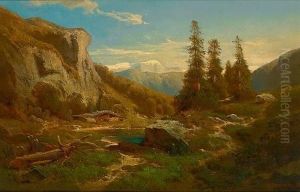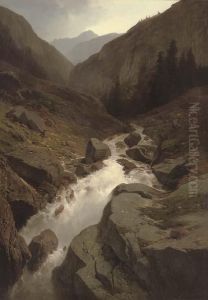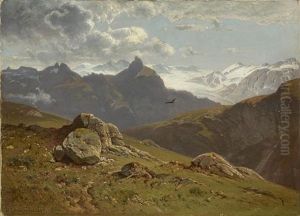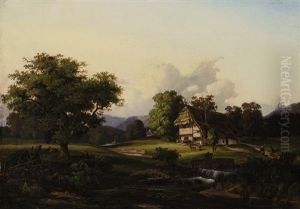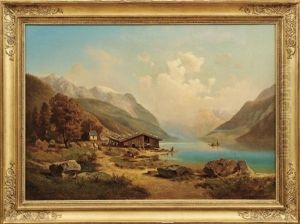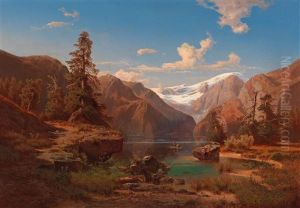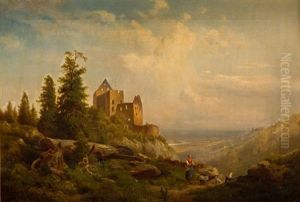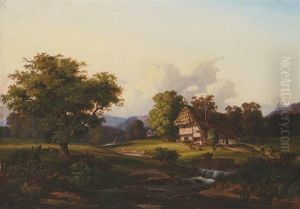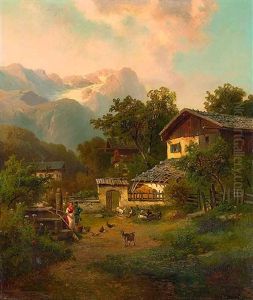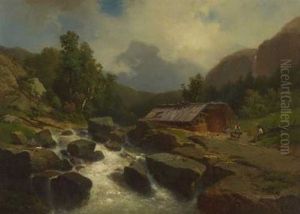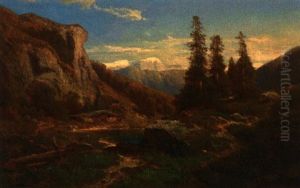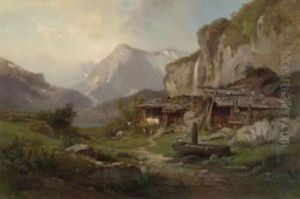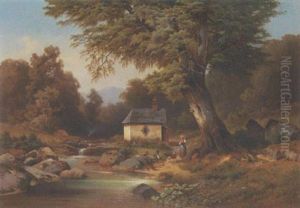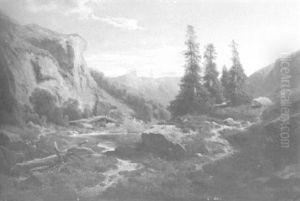Dedo Carmiencke Paintings
Dedo Carmiencke, born Johann Carl Ludwig Carmiencke or Dedo Johann Carl Ludwig Carmiencke, was a notable landscape painter and etcher from the 19th century, hailing from Hamburg, Germany. His artistic journey was deeply influenced by the Romantic movement, which was prominent during his lifetime. Carmiencke's early years were spent in his native Hamburg, where he initially developed his skills and passion for art. However, his quest for artistic growth led him to seek inspiration beyond his homeland.
In 1837, Carmiencke decided to move to Dresden, which was then a vibrant center for artists and intellectuals in Germany. Dresden's picturesque landscapes, rich cultural scene, and the presence of other artists provided a fertile ground for Carmiencke to refine his craft. It was during this period that he began to gain recognition for his landscape paintings, characterized by their meticulous detail, atmospheric perspective, and the romantic portrayal of nature. His works from this period reflect a deep appreciation for the natural world, capturing the transient beauty of landscapes with a profound sense of emotion and mood.
The political unrest in Europe during the 1840s, particularly the revolutions of 1848, prompted Carmiencke to emigrate to the United States. Settling in Brooklyn, New York, he continued to pursue his career as an artist. In America, he found new landscapes and vistas to inspire his work, including the dramatic scenery of the Hudson River Valley. Carmiencke's American landscapes contributed to the growing appreciation of the country's natural beauty during the mid-19th century and aligned with the interests of the Hudson River School, although he remained distinct in his style and approach.
Carmiencke's contributions to art were not limited to his paintings. He was also an accomplished etcher, producing works that showcased his attention to detail and his ability to capture the essence of his subjects. Despite facing the challenges of adapting to a new country and the evolving tastes of the art market, Carmiencke managed to sustain a successful career until his death in 1860. Today, his works are remembered for their romantic sensibility, technical skill, and the artist's unique ability to convey the beauty and majesty of the natural world.

